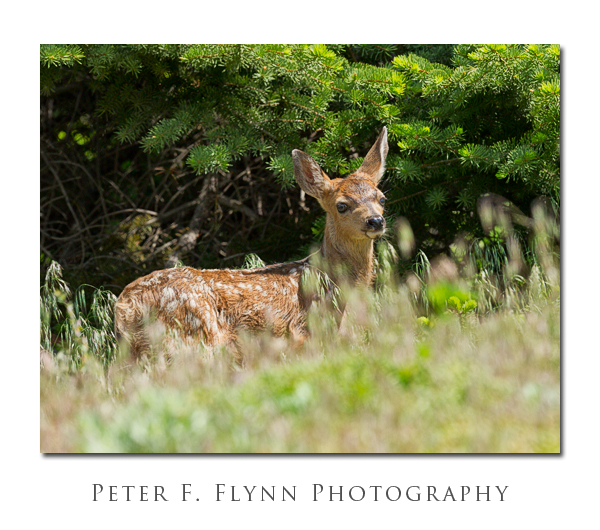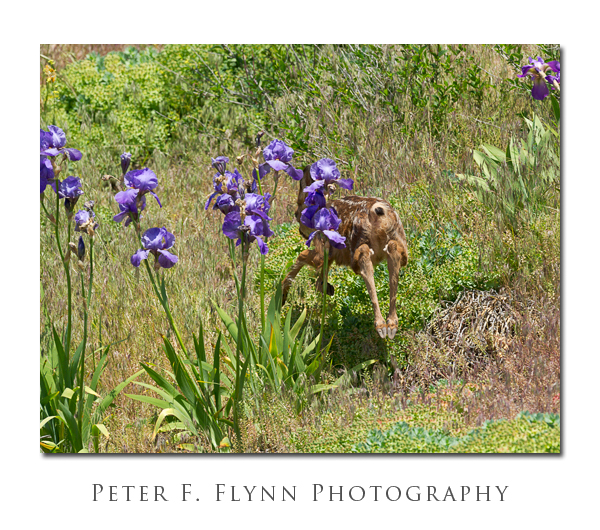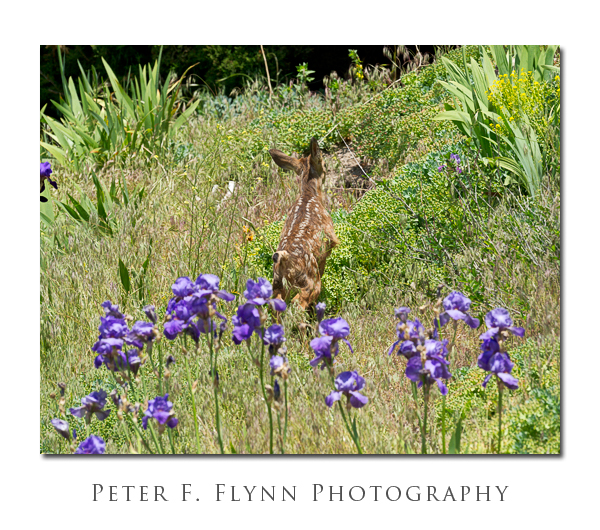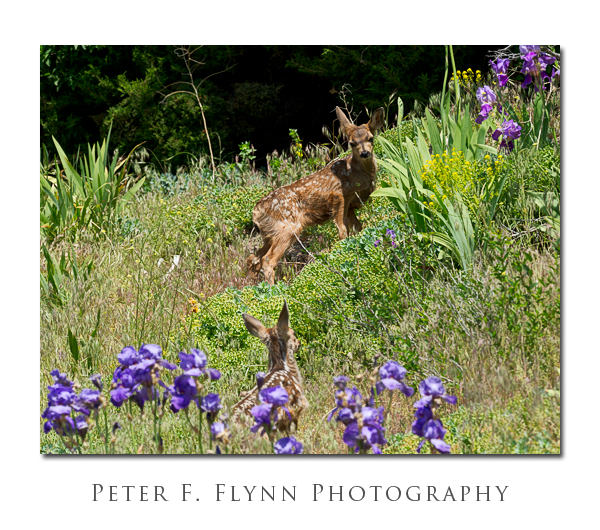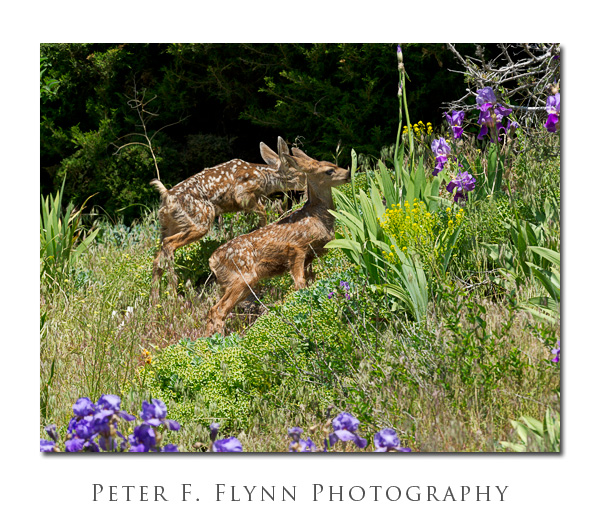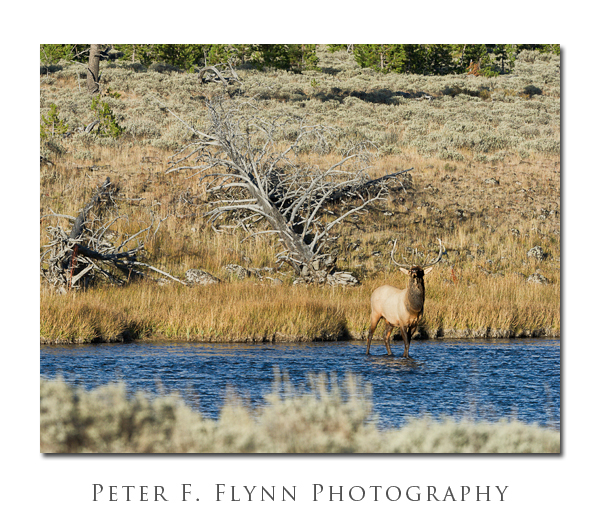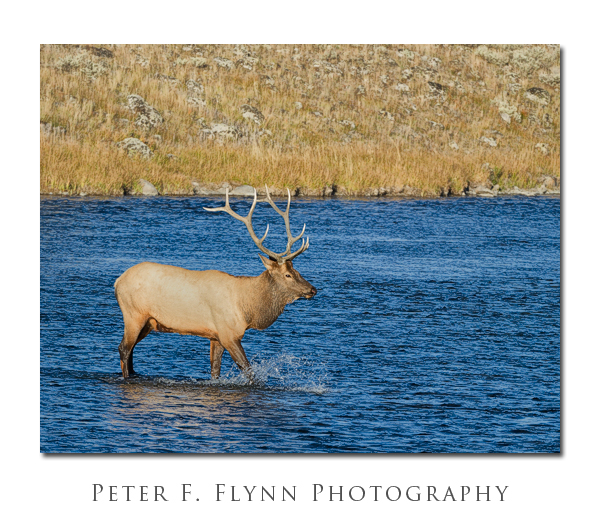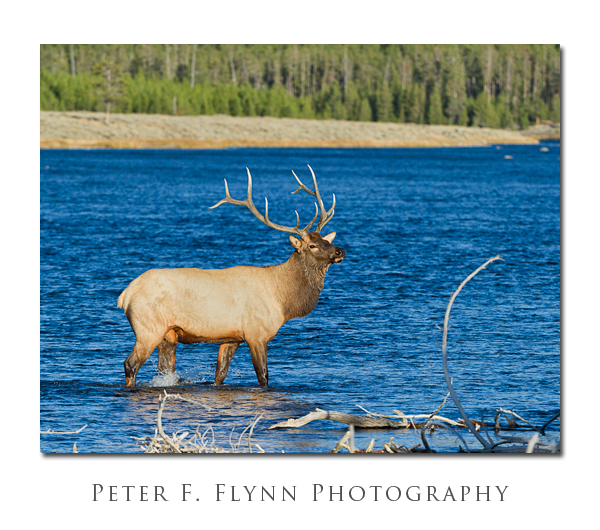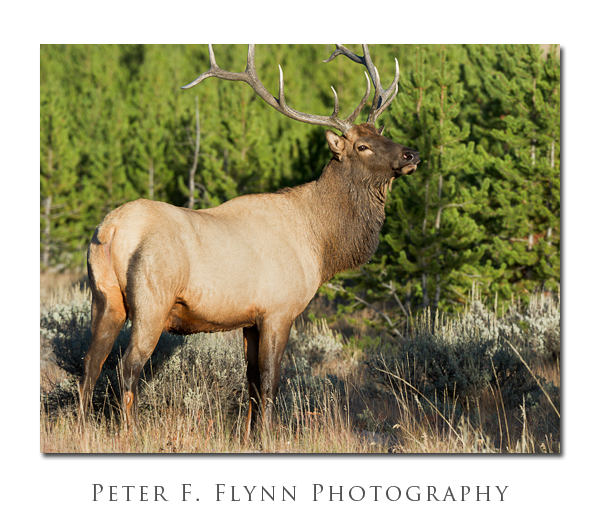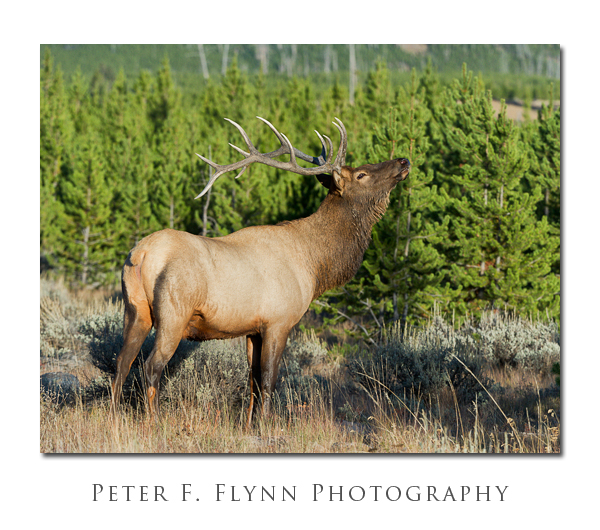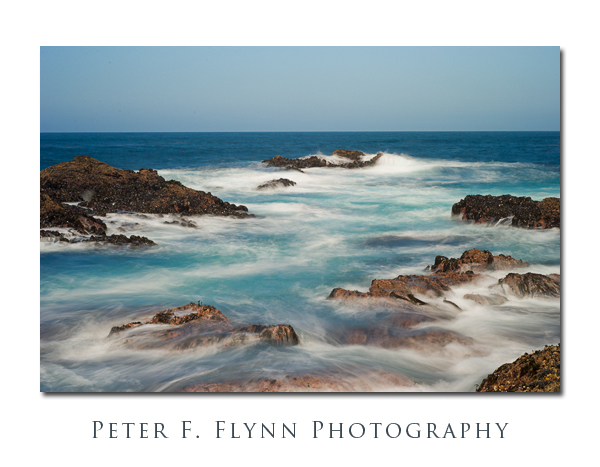
Point Lobos State Natural Reserve, or to most simply, Point Lobos, is a one of the major protected nature sanctuaries of the central California Coast. In addition to the remarkable natural beauty of the point, for many, including yours truly, Point Lobos represents the northern boundary of the great state of Big Sur.
The image above, as well as the two that follow, were recorded at noon, April 10, 2011, using the Nikon D3s and the AF-S NIKKOR 24-70mm f/2.8G ED lens. Exposures were f/13 or f/14 at 2-3s, ISO 200. The images immediately above and below were shot at 62mm, whereas the second image below was recorded at 32mm. Approximate coordinates of the site were 36°31’07.91″N, 121°57’14.33″W.
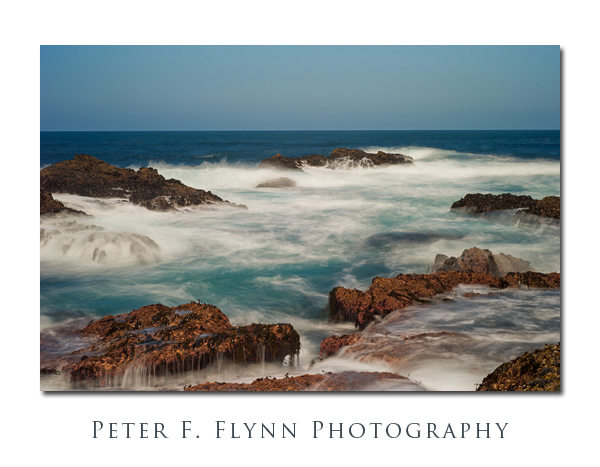
The entrance to Point Lobos SNR is located a couple of miles south of Carmel-by-the-Sea, on Highway 1 (aka, the Cabrillo Highway). The entrance fee to the Reserve is $10, which includes a very good map of the area, but entrance à pied is gratis – this accounts for the crowd of vehicles lining Hwy 1 near the Reserve entrance. Hours are 8 am until 30 minutes after sunset. A Google Maps link to the area may be found here.
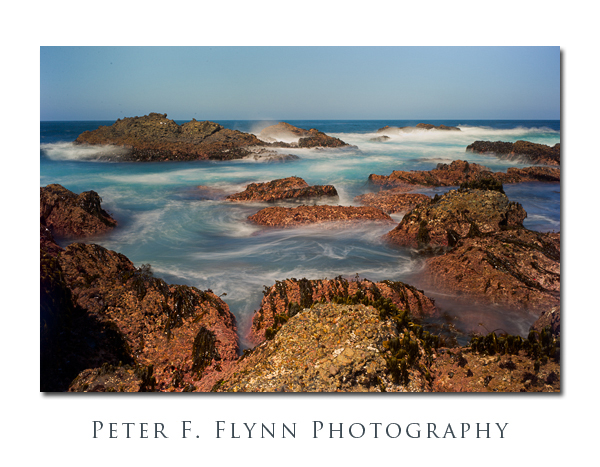
The three previous images were recorded with the assistance of the Singh-Ray Vari-ND filter. I used the thin version of the filter with 77mm mount. I’m happy with these images, but this piece of gear can be challenging to work with in conjunction with wide-angle lenses – much more so than you might imagine. To be fair, the Singh-Ray literature does clearly indicate that there are limitations to appearance of vignetting and other weird irregularities on full-frame camera + wide angle lens setups (an ‘X” pattern appears on a number of images recorded in this shoot – the image immediately above reveals this artifact a bit). You definitely need to chimp any images shot with the Vari-ND.
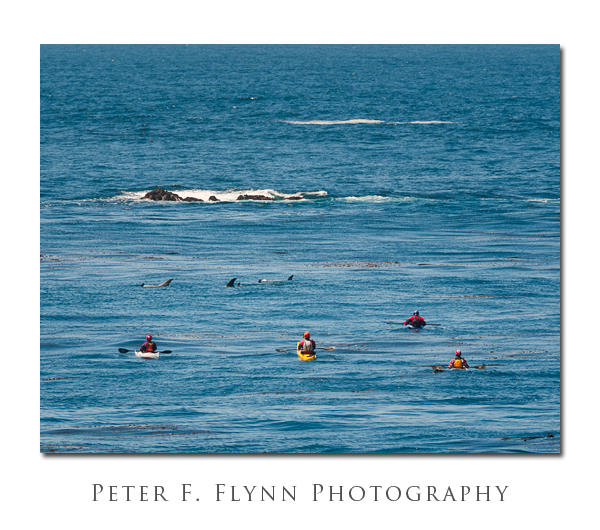 The image above of kayakers and a pod of Risso’s Dolfins was recorded at on April 10, 2011, at 14:00 PST, using the NIKON D300 and the AF-S VR Zoom-NIKKOR 70-300mm f/4.5-5.6G IF-ED lens at 300mm (450mm FX equivalent). Exposure was f/8.0 and 1/640s (+0.33 EV), ISO 200. Exposure normalized in ACR 6.4. This image was shot from the trail above Sand Hill Cove at approximate coordinates 36°30’55.95″N, 121°56’53.97″W.
The image above of kayakers and a pod of Risso’s Dolfins was recorded at on April 10, 2011, at 14:00 PST, using the NIKON D300 and the AF-S VR Zoom-NIKKOR 70-300mm f/4.5-5.6G IF-ED lens at 300mm (450mm FX equivalent). Exposure was f/8.0 and 1/640s (+0.33 EV), ISO 200. Exposure normalized in ACR 6.4. This image was shot from the trail above Sand Hill Cove at approximate coordinates 36°30’55.95″N, 121°56’53.97″W.
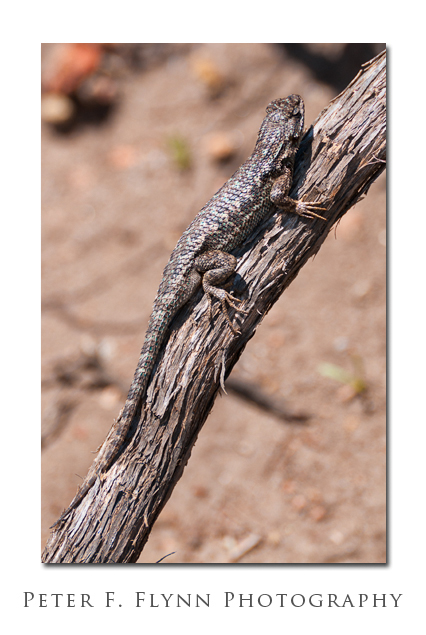
The images above of the lizard, and of the Harbor Seal below, were recorded at on April 10, 2011, at 14:30 PST, using the NIKON D300 and the AF-S VR Zoom-NIKKOR 70-300mm f/4.5-5.6G IF-ED lens at 300mm (450mm FX equivalent). Exposure for the lizard image was f/8.0 and 1/500s , ISO 200. Exposure for the Seal image was f/8 and 1/250s, ISO 200. Both images were shot from a point where the trail climbs above the little inlet at the back of the Sand Hill Cove. Approximate coordinates of the site were 36°31’53.97″N, 121°56’57.85″W.
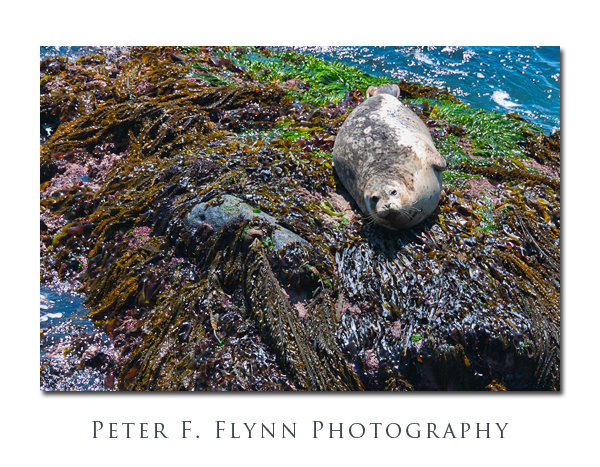
Yes, I do carry polarizers with me at all times, but I use them sparingly. I’m not particularly hung up on absolute authenticity, but honestly, for me specular reflection can be part of the magic of the scene. Thus in the image of the basking Harbor Seal above I consciously left the polarizer off the lens to capture the high key of the scene.
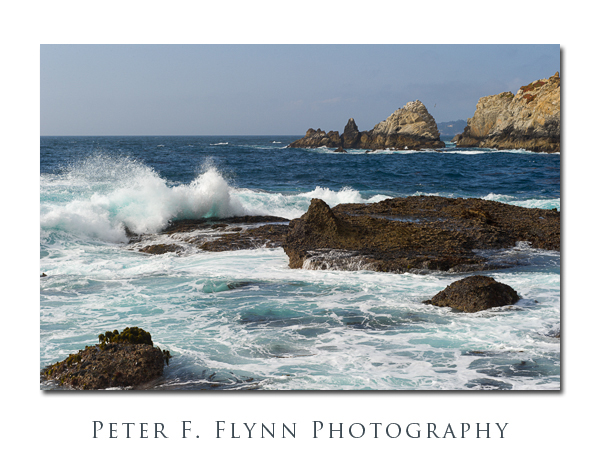
One more image of the most excellent surf at Sea Lion Point. Fair thee well Point Lobos, and I’ll see you in two years.
All images were processed in Photoshop CS5 with capture and output sharpening conducted using Pixel Genius Photokit Sharpener 2.0.1, and contrast, saturation and local adjustments conducted using Nik Software Viveza 2 and Color Efex Pro 3.
Copyright 2011 Peter F. Flynn. No usage permitted without prior written consent. All rights reserved.
